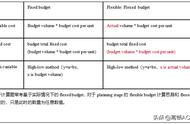
X6U2
一、重点单词词组
1.convey
(1) vt. 表达,传递(思想、感情等) 用法:
① convey one's feelings/ideas 表达感情/想法
② convey sth. to sb. 把某物送给某人
(2) vt. 输送,运送 用法:
① convey sth./sb. (from) to 把某物(某人)从....送到....
相关: conveyance n.传送,运送 conveyor(er) n.传送者,运送者
辨析:convey carry transport
convey 指通过中间人传递信息、或以某种方式把人或物送到目的地。
carry 指把物品从一个地方带到另一个地方,不涉及方向,只强调方式。
transport 尽管表达运送,但该词常局限于用交通工具运送货物和人
2.concrete adj.具体的;混凝土制的 n.混凝土
3.contradictory adj.相互矛盾的,对立的
用法: be contradictory to 与...对立/矛盾
相关: contradict v.反驳;相矛盾 contradiction n.不一致;矛盾
4.flexible adj.灵活的,可变动的;柔韧的,可弯曲的
相关:flexibility n.灵活性 flexibly adv.灵活的
5.tease v.取笑,戏弄,招惹,逗弄(动物)
用法:tease sb. about sth. 就某事取笑某人
n.戏弄,捉弄,取笑,爱戏弄人的人
tease的近义:
① laugh at 嘲笑
② make fun of 取笑
③ play a joke /jokes on 开...的玩笑
④ play a trick/tricks on 捉弄
⑤ make a fool of 愚弄
6.transform vt.转化,转换;使改观
用法:transform sth. (from) into...
相关:transformation n.转变,变化
7.in particular 尤其,特别=(especially, particularly)
相关词:
① particular adj. 特别的
② particularly 特别,尤其
③ be particular about/over 对...挑剔/讲究
" in adj."构成其他短语
in general = generally 通常
in brief = briefly 简言之
in total = totally 总共
8.branch n.树枝;支流;支线;分部,分店
9.sorrow n.悲伤,悲痛 ;伤心事,不幸
① to one's sorrow 令某人伤心的是
② sorrow at/for/ over sth. 对...感到悲伤
③ in sorrow 悲伤地
相关:sorrowful adj.悲伤的,悲痛的 sorrowfully adv.悲伤地,哀伤地
10.appropriate adj.合适的,恰当的
① be appropriate for /to sth. 适合、合乎...
② it's appropriate for/to sth. 做某事很合适
相关:appropriately adv.恰当的 appropriateness n.恰当,合适
inappropriate adj.不恰当的,不适合的
11.exchange
vt.交流,交换;兑换
① exchange A for B 用A交换B
② exchange sth. with sb. 与某人交流/交换某物
n.交流,交换,互换;兑换
① in exchange (for)... 作为(对...的)交换
② make an exchange for... 交换
12.sponsor n.赞助人,资助者,倡议者
vt.赞助;举办;促成,资助
相关:sponsorship n.赞助款,资助,倡议
13.darkness n.黑暗,漆黑
辨析:darkness dark
darkness 仅指因无光而黑暗或漆黑
dark 除了指因无光而黑暗外,还指黑夜,黄昏和无知
14.blank n.空白处,空格;遗忘,空白
adj.空白的,没表情的,茫然的
15.inspire
vt.鼓舞,激励,后接"人"作宾语
① inspire sb. 激励某人
② inspire sb. to do sth. 激励某人做某事
vt.启发思考,赋予灵感
用法:inspire sb. 赋予某人灵感
vt.使产生(感觉、情感)
用法:inspire sb. with sth. (=inspire sth. in sb.) 使某人产生感觉/情感
16.load
n.负荷;沉重感;承载量 (pl.) 大量,许多
① a load of = loads of 许多
② take a load off one's mind 消除某人的精神负担
③ carry a load 负重
v.装入,装上;承载,装载
① load...with sth. 把某物装上
② load sth. into/onto... 把某物装入
17.make sense 合乎情理的,明智的;讲得通;有道理;有意义;表述清楚;易于理解
用法: make sense to do sth. 做某事是明智的
辨析:
① make sense 不及物动词短语,主语常是物,无被动语态,意为"有道理,讲得通"
常用于make sense to sb. 对某人来说是有意义的
② make sense of 及物动词短语,主语常是人,可用于被动语态,意为"弄懂,理解"
常用于 make sense of sth. 搞清…的意思
18.at the end of 介词短语
①表示地点时,意为"在...尽头、末端",of后常接表示地点的名词
②表示时间时,意为"在...结束时",of后常接表示过去或将来时间的名词或表示活动的名词
辨析:
① at the end of 指"在...尽头、末端""在...结束时"后可跟表示时间或地点的名词,在句中做时间状语或地点状语
② in the end 指"最终,结果",在句中作状语
③ at an end 指"完毕,终结",在句中作表语,句子中常用一般过去时
19.take it easy
① 放松,休息,别过分劳累(= take things easy)
② 沉住气,别急,从容点
辨析:
① take it easy 表示"放松,别急",多用于安慰对某事感到不安的人
② take one's time 表示"慢慢来",暗含时间充裕,不必紧张之意
20.either...or... 要么....要么... 不是...就是... (表示二者择一,常用于连接两个成分)
用法:当either...or...连接两个名词或代词作主语时,谓语动词的人称和数就近一致。
相关:除either...or...之外neither... nor..., not only...but also 连接并列成分做主语时,谓语动词的数也要就近一致。
21.run out of 用尽,耗尽,从...流出;从...跑出
辨析:
① run out/give out 意为"用完,耗尽"时,为不及物动词短语,后面不接宾语,也不可用于被动语态。其主语常是时间、金钱、食物等无生命的名词
② run out of 意为"用完,耗尽"为及物动词短语,后面接宾语,不用被动语态。主语通常是人。
相关:① run across 偶遇 ② run after 追赶,追逐 ③ run into 撞上,偶遇 ④ run through 快速传遍,浏览,刺穿 ⑤ run over 撞倒并碾压,快速阅读;溢出 ⑥ run out 用完,耗尽 ⑦ run away(from) 逃离,躲避
22. be made up of 由...构成、组成
用法:其主语为表示整体的人或事物,即整体由部分组成。其主动形式make up 表示部分的人或事物,即部分构成整体
相关:① make up 构成,化妆,编造 ② make up for 弥补,补偿 ③ make out of 辨认清楚,理解,明白 ④ make use of 利用 ⑤ make it 获得成功,渡过难关 ⑥ make the most of 充分利用 ⑦make sense 有意义,讲得通 ⑧ make up one's mind 下定决心
23.use to do 过去常常做某事,暗含"过去如此而现在不再...",表示今昔对比
① 否定式:usen't to do/didn 't use to do
② 疑问式:Used 主语 to do sth./Did 主语 use to do sth?
24.try out 测试,试验:试用(某人)
相关:① try on 试穿 ② try for 力争赢得 ③ try out for 参加..选拔 ④ try one's best 尽某人最大努力
25.let out 发出(叫喊),放走,释放,泄露
相关:① let alone 更不用说 ② let sb. alone 不管、不干涉某人 ③ let sth. down 把某物放下 ④ let sth./sb. in 让某物/某人进来 ⑤ let sb. down 使某人失望 ⑥ let go for 放手,松开
二、重点句型
1.reason 后接定语从句
① 若引导词在从句中作状语,要用why或for which
eg. The reason why/for which he was late was that he got up late.
② 若引导词在从句中做主语、宾语等,要用which或that,其中作宾语时引导词可省略
eg. The reason which/that you have given sounds reasonable.
2.way后接定语从句
①当way后面的从句缺少主语或宾语时,关系词用which/that(作宾语时可省略)
eg. The way (that/in which) he told us was quite simple.
②当way后面的从句缺少状语时,关系词用that/in which 可省略
eg. The way (that/in which) he explained the question was quite simple.
相关:way(方式,方法)作定语,以下形式
① way to do sth. ② way of doing sth.
3.主语 be adj.( for sb.) to do 句型
① adj.多为表示主语性质,特征的词。如easy,difficult, impossible, comfortable等
② 不定式中的动词和句子存在逻辑上的动宾关系,但形式上不定式用主动形式表示被动意义。
eg. The novel are interesting to read.
③不定式中的动词若为不及物动词,其后应加上相应介词。
eg. The room is pleasant to live in.
④ 不定式有时会带上自己的逻辑主语,并用for引出
eg. The question is hard for me to answer.
注意:如果作表语的adj.不是用来说明主语的性质或特征的,且不定式中的动词与句子的主语为逻辑上的动宾关系,此时不定式要用被动形式。
eg. The papers are ready to be signed.
4.while 作并列连词的用法
while作并列连词时,表示对比,意为"而,然而",用来连接两个并列分句
eg. She thought I was talking about her daughter, while in fact , I was talking about my daughter.
拓展:while作从属连词
① 引导时间状语从句,意为"当...时候",从句谓语动词必须用延续性动词
eg. The telephone rang while I was walking in the garden.
② 引导让步状语从句,意为"尽管",while引导让步状语从句时,从句往往位于主句前。
eg. While I admit it is very difficult , I can solve it.
注意:when和while引导时间状语从句,注意从句中的谓语动词,如果延续性动词,两者均可,如果短暂性动词,只用when
辨析:
① while,并列连词,着重强调前后两者的对比
② but并列连词,总是位于它所引出的分句之首,之后不用逗号,着重强调前后意思的转折,转折意味较however强
③ however 连接副词,可放在句首、句中或句末,通常用逗号与句子其他成分隔开,表示前后意思的转折
5."感官动词 宾语 宾补"结构
用法:
① 用于此结构的感官动词:see, watch, observe, look at, notice, hear, listen to, feel
② 宾补的形式:doing 强调动作正在进行
do 强调动作发生的全过程
done 强调动作已完成,宾语与宾补之间构成逻辑上的动宾关系
eg. I saw him cross the street and enter a bookstore.
I saw him crossing the street when the accident happened.
I saw him taken away by the police.
注意:在感官动词后作宾补的不定式不带不定式符号to,但感官动词处于被动语态中,要加to
eg. She was seen to come into the classroom
6.with的复合结构
即"with 宾语 宾补" 在句中常做后置定语或状语
用法:
① with 名词/代词 形容词 ② with 名词/代词 副词
③ with 名词/代词 介词短语 ④ with 名词/代词 不定式
⑤ with 名词/代词 现在分词 ⑥ with 名词/代词 过去分词
⑦ with的宾语与构成的动词为逻辑上的动宾关系,则用过去分词作宾语补足语
⑧ with的宾语与构成的动词为逻辑上的主谓关系,则用现在分词作宾语补足语
⑨ 如侧重表示将来的动作,用不定式作宾语补足语
eg. With the house empty, Jack felt lonely.
They sat with the light on for half an hour.
7.so...that...结构
用法:so...that... "如此...以至于..." 引导结果状语从句,so后面常接adj.或adv.
① so adj. that从句 ② so adj. a/an 可数名词单数 that从句
③ so many/few 可数名词复数 that从句 ④ so much/little 不可数名词 that从句
拓展:such...that...也表示"如此...以至于..." 但such修饰名词
① such a/an adj. 可数名词单数 that从句 ② such adj. 可数名词复数 that从句
③ such adj. 不可数名词 that从句
8.get 宾语 宾补
在此结构中,get用作使役动词,意为"使,让"后接复合宾语,其中宾语是名词或代词,宾补可以是形容词、副词、介词短语、不定式、分词
用法:
① get 宾语 过去分词 意为"使...被..." 宾语和过去分词之间存在逻辑上的动宾关系,此处get可换为使役动词have
eg. I will get my hair cut tomorrow.= I will have my hair cut tomorrow.
② get 宾语 现在分词,意为"让...开始做某事",而"have 宾语 现在分词" 意为"让...一直做某事"
③ "get 宾语 to do"意为 "让...做某事"。相当于"have/make/let 宾语 do sth". get后面必须接to,而have/make/let后面的不定式不带to
eg. I will get the machine running.
④ "get 宾语 adj./adv./介词短语"意为"让...处于某种状态"
eg. Don't get your dress dirty!
9.Sb./sth. be likely to do sth.
用法:表示"某人、物可能...",可以和 "It be likely that..."互换
eg. He is likely to attend the meeting.= It is likely that he will attend the meeting.
辨析:
① likely 语气比possible强,比probably弱,主语可以是人或物,也可以是形式主语it
句型:sb./sth. is likely to do sth; It is likely that...
② probably语气最强,通常用it作形式主语。句型:It is possible that...
③ possible 语气最弱,通常用it作形式主语
句型:It is possible for sb. to do sth.; It is possible that...
eg. He is likely to set a world record in the future.
It is possible for him to set a world record in the future.
It is probable that he will set a world record in the future.
10.although 引导的让步状语从句
用法:although为连词,可以引导让步状语从句,意为"虽然",通常和though互换。句子用了although/though就不能用but,但although/though可与yet,still发、等副词连用。
辨析:
① although和though常可互换,although较为正式
② though多用于非正式文体中,它引导的从句可倒装(=as)也可不倒装
③ as 引导让步状语从句时,要把从句中作表语的名词,形容词,作状语的副词或作谓语的实意动词提前,提前的名词前不带冠词.
eg. Try as he might, he could not solve the problem.
Although he is very old, yet he is quite strong.















